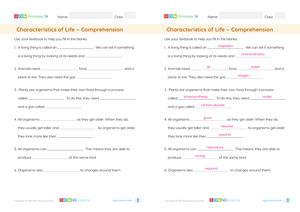Begin the lesson with an engaging discussion on the diversity of plants, highlighting their presence in various environments around the world. Introduce the concept of photosynthesis and its significance in the plant kingdom.
Go to the LessonLearning Objectives
- Understand the basic process of photosynthesis and its importance for plants.
- Differentiate between flowering and non-flowering plants based on their reproductive structures.
- Classify plants as either vascular or non-vascular by examining their internal structures.
- Identify and describe common types of plants, including flowering plants, conifers, ferns, and mosses.
Introduction and Hook
Direct Instruction
Explain the classification of plants into flowering and non-flowering categories. Discuss the reproductive structures of each type and their significance.
Introduce the concept of vascular and non-vascular plants, focusing on their internal structures such as xylem and phloem.
Guided Exploration
Watch the video 'Gymnosperms' to explore non-flowering plants like conifers. This video provides insights into their ecological roles and unique characteristics.
Hands-On Activity
Independent Practice
Check for Understanding
Conduct a class discussion to review key concepts, asking students to differentiate between vascular and non-vascular plants and identify examples of each.
Review and Reflection
Encourage students to reflect on what they have learned about plant classification and the importance of photosynthesis. Use a Venn diagram to compare flowering and non-flowering plants.
Assessment and Extension
Administer the 'Review – Classification of Organisms' assessment to evaluate students' understanding of the topic. This comprehensive review helps consolidate their learning.
Encourage students to explore further by trying the quiz related to the unit.
Try the Quiz





